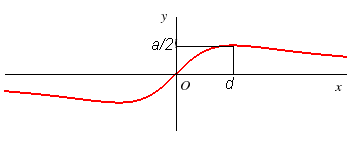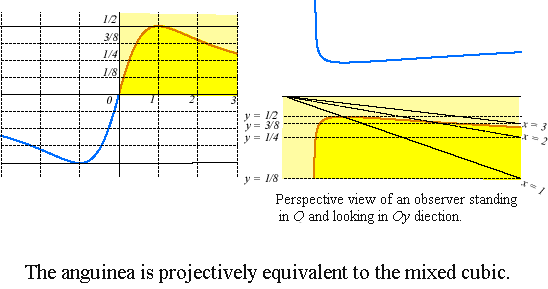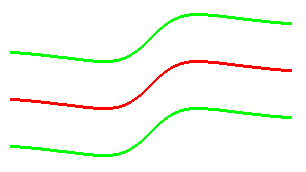ANGUINEA

| next curve | previous curve | 2D cruves | 3D curves | surfaces | fractals | polyhedra |
ANGUINEA

| Curve studied by L'Hospital and Huygens in 1692, then
by Newton in 1701.
From the Latin anguis "snake, hydra, dragon" (your choice !), name given by Newton. Other name : serpentine cubic. |
 |
Cartesian equation: Cartesian parametrization: Polar equation: |
|
The anguinea is the hyperbolism of the circle with respect to a point O of this circle and a straight line parallel to the diameter passing through O. Here, the circle is the circle of diameter [OA] with A(a, 0) and the line, y = d. |
 |
|
Like the witch of Agnesi, it is a projection of the horopter. |
 |
In the figure hereafter, we used
instead of
for more readibility.

The anguinea is a directrix curve of the Plücker's conoid.

| next curve | previous curve | 2D curves | 3D curves | surfaces | fractals | polyhedra |
© Robert FERRÉOL 2016